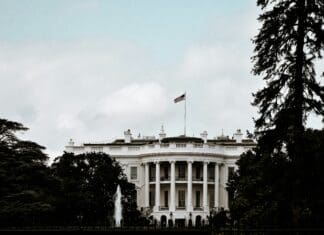This post is also available in:
 עברית (Hebrew)
עברית (Hebrew)
As the first instalment of a new wall along the US southern border gets underway, border security experts told lawmakers they’re already working with a combination of technology and physical barriers, but extending situational awareness to agents in the field is a key ingredient of border security. Technology that will provide situational awareness for agents manning the wall remains an unanswered critical, unfulfilled component of the secure border equation, officials said during a hearing held by a subcommittee of the House Homeland Security Committee.
Physical barriers, including the wall, are effective but only in conjunction with supporting technology. And they might not be efficient across the entire southern border, said Scott Luck, the Border Patrol’s acting chief, who added that the use of physical barriers “depends on terrain.” While walls and sturdy fencing might slow down crossings in urban areas, it is not as effective in the remote and wilder portions of the border, he said. Luck later said it was fair to say that physical barriers are better in urban areas and technology is better in more remote locations.
Todd Owen, executive assistant commissioner of CBP (Custom and Border Patrol)’s Office of Field Operations, agreed that physical barriers will only go so far in controlling the border.
Luck and Owen told fcw.com that situational awareness for agents on the ground is a crucial element of a secure border. They explained that technologies that can provide persistent short, medium and long-range surveillance data in remote areas and help for agents who might be chasing someone through difficult terrain are also critical, they said.
Subcommittee Chairwoman Rep. Martha McSally (R-Ariz.) and Rep. Will Hurd (R-Texas) asked if CBP agents had access to more than voice communications when they were working. Luck said most agents don’t have ready, integrated access to data from sensors and surveillance cameras and must rely on someone telling them what is happening in a given situation.
He added that he wants to change that. His “dream scenario” would be to have “the right mix of technology that talks to all components and shares information immediately to agents and operators who need it,” he said. Luck was urged to continue to look at off-the-shelf technologies that agents could use in the field and tools that could be integrated across border security elements.

























